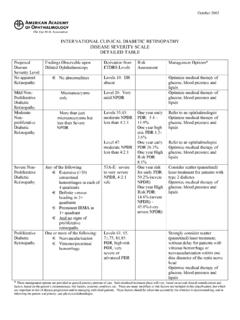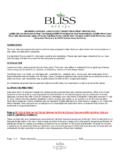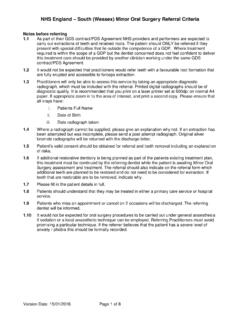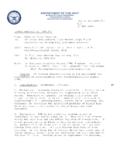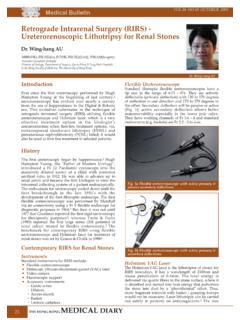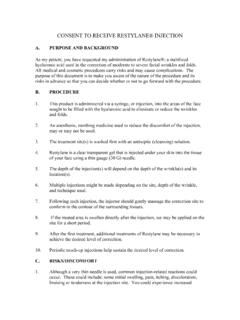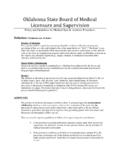Transcription of Combining laser and ultrasound technologies to …
1 CASE STUDY 124 Journal of Aesthetic NUrSiNg April 2013 Volume 2 issue 3 Medical technologies are continously improving and combination therapies are often used by aesthetic practitioners to give patients the results they want to achieve. Whereas laser therapies exist for the treatment of skin conditions (Papadavid and Katsambas, 2003), ultrasound technology can be used to push particles from one place to another (issa, 2013) and platelet-rich plasma (PrP) is one of many injectable treatments offered by aesthetic practitioners for the purpose of skin rejuvenation injections (redaelli, 2010).
2 This article is a case report of a 47-year-old woman who had needle-free PrP combined with minor fractional laser treatment for the purpose of skin rejuvenation. A carbon dioxide (CO2) laser was used to create skin perforations, PrP was applied topically using sterile gloves and an ultrasound probe forced the PrP from the skin surface into the dermis. As PrP was administered without a needle, there was no risk of post-procedure bruising. Both the patient and clinician were pleased with the treatment outcomes and saw objective and subjective improvements to the quality of her modalities for skin damage and dermal rejuvenation LaserOf the many different lasers available, the CO2 laser is one which is known as ablative.
3 laser is an acronym for light amplification by the stimulation of electromagnetic radiation (Carroll and Humphreys, 2006); therefore, the CO2 laser produces an intense beam of photons by exciting CO2 to produce infrared light (ross et al, 1999). The infrared light produced is of one wavelength only, which differentiates lasers from an intense pulsed light (iPL) system, which produces a bright light comprised of many different wavelengths (Hedelund et al, 2006). Whereas some lasers cause skin or tissue ablation (such as Erbium YAg lasers and CO2 lasers), others are non-ablative (such as Nd:YAg and Alexandrite lasers) (Alexiades-Armenakas et al, 2008).
4 Following CO2 laser treatment, a wound is created owing to a loss of epithelium (ross et al, 1999). Wound healing subsequently takes place from unablated epithelium over a period of several weeks (ross et al, 1999). During this time, epithelial elements in the dermis, including hair follicles, apocrine glands, eccrine glands and epithelial elements at the reticular-papillary dermis junction, multiply to re-epithelialise the skin (Martin, 1997). This is why the skin can often be red for a few months following CO2 laser resurfacing.
5 Common technology built into CO2 lasers enables the beam to be fractionated. This means that, instead of ablating the whole surface of the skin, the laser is fired in an array of dots, causing ablation of the areas treated, but leaving areas of normal skin surrounding the ablated skin. This leads to faster wound healing, as healing by secondary intention and wound contraction also occur by multiplication of the remaining epithelial elements within the skin (Martin, 1997). Fractionated CO2 laser treatment, therefore, leads to a more rapid Combining laser and ultrasound technologies to deliver platelet-rich plasmaTaimur ShoaibTaimur Shoaib, Consultant Plastic Surgeon, La Belle Forme, 24-26 Wilson Street, glasgow e: therapies are often used by aesthetic practitioners to achieve the best possible results for their patients.
6 Although laser therapies can produce good results when treating common skin conditions, ultrasound technologies can be used to push particles from one place to another. Platelet-rich plasma (PRP) treatment is also one of many injectable procedures available for the purposes of skin rejuvenation and revitalisation. This paper describes a case report of a 47-year-old woman who was treated with needle-free PRP, minor fractional laser treatment and an ultrasound probe. A carbon dioxide (CO2) laser was used to create perforations, PRP was applied topically to the skin, and then an ultrasound probe was used to force the PRP from the skin surface into the dermis.
7 As PRP was administered without a needle, the procedure was performed without causing any post-procedure bruising. The patient was pleased with the treatment outcomes and the quality of her skin improved significantly. Key words Platelet-rich plasma laser ultrasound Combination 12410/05/2013 14:29126 Journal of Aesthetic NUrSiNg April 2013 Volume 2 issue 3 CASE STUDY recovery post procedure (Alexiades-Armenakas et al, 2008). The recovery rate depends on the depth of ablation, power settings of the laser , diameter of each dot, distance between subsequent dots, and the length of time the laser beam is in contact with the and contraindicationsCO2 laser resurfacing is indicated for the treatment of acne scarring, epidermal hyperplasia, fine lines and wrinkles, surface ablation of rhinophyma, stretch marks and sun-damaged skin.
8 Contraindications include active skin infection, a predisposition to keloid scars, taking isotretinoin (roaccutane) within the previous six months, thinned skin in the region to be treated and a tendency for poor has been used in medical practice for many decades and is now used for imaging and treatment (Newman and rozycki, 1998). Treatment options with ultrasound include external and/or internal fat cell ablation, and can also be used to push particles into the skin through pores created by an appropriate skin penetration system (issa, 2013).
9 A fractionated CO2 laser could be such a system; however, equally, skin perforations can be created by micro needling or an Erbium laser (Alexiades-Armenakas et al, 2008). in his clinic, the clinician uses an ultrasound head with iMPACT technology (ABC Lasers, Cambridge), which is part of the iPixel CO2 laser . The laser has two heads: one of which is the CO2 laser and the other is the iMPACT ultrasound head. The ultrasound head is designed to deliver mesotherapy following fractional ablation treatment with the CO2 laser and is a proven technology for the delivery of products to the dermis (gold, 2012).
10 Indications and contraindicationsThe use of ultrasound with the iMPACT head has not been fully established as a treatment option in Figure 1: VISIA scan before treatment, showing spots, wrinkles, texture, pores, UV spots, brown spots, red areas and porphyrins (from left to right, first row to second row) 12610/05/2013 14:29 Volume 2 issue 3 April 2013 Journal of Aesthetic NUrSiNg 127 CASE STUDY medical aesthetics. ultrasound is indicated to deliver a topical product into the dermis; however, since the technology is new, there are no published or reported contraindications for plasmaPrP injections are increasing in popularity as a method of skin rejuvenation, which involves taking a blood sample and centrifugation of the blood to separate its components.
